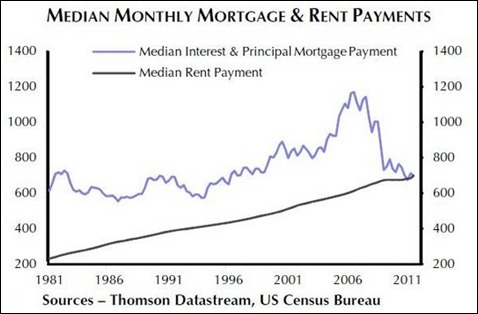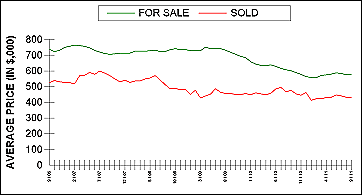Falling home prices have sent many would-be buyers to the sidelines. In many cases, record low interest rates and rising rents may prompt some of them to take a second look at buying.
Much of the decision to buy a house still depends on your personal finances and preferences, your career or family life, or level of financial security. But if you’re comparing just the cost of owning and renting, buying a house may soon be the better choice.
Until recently, home ownership was no bargain compared to renting, according to his analysis. A 33 percent drop fall in home prices, a plunge in mortgage rates and 15 percent rise in rents since the housing crash has evened the scales. Today, the median monthly mortgage payment of about $700 has fallen to about the level of a median monthly rent check. If mortgage rates keep falling and rents keep rising, the equation will tip even further toward owning.
But that analysis doesn’t include the total cost of owning versus renting. A full accounting includes closing costs, maintenance, insurance and property taxes, tax savings from mortgage deductions, gains or losses from home equity, among other factors. Renters have to think about broker fees and future rent hikes. Both have to make assumptions about future trends in housing prices and rents.
When you take those factors into account — someone who plans on staying put for seven years would come out ahead by about $9,000 if they bought a median-priced home rather than being a tenant in a median-priced rental, assuming that rents keep rising by about 3 percent a year and that house prices stay flat in 2012 and 2013 and begin rising in 2014 at about 3 percent a year.
If you would like to investigate this more, shoot me an email or call 206-713-3244



